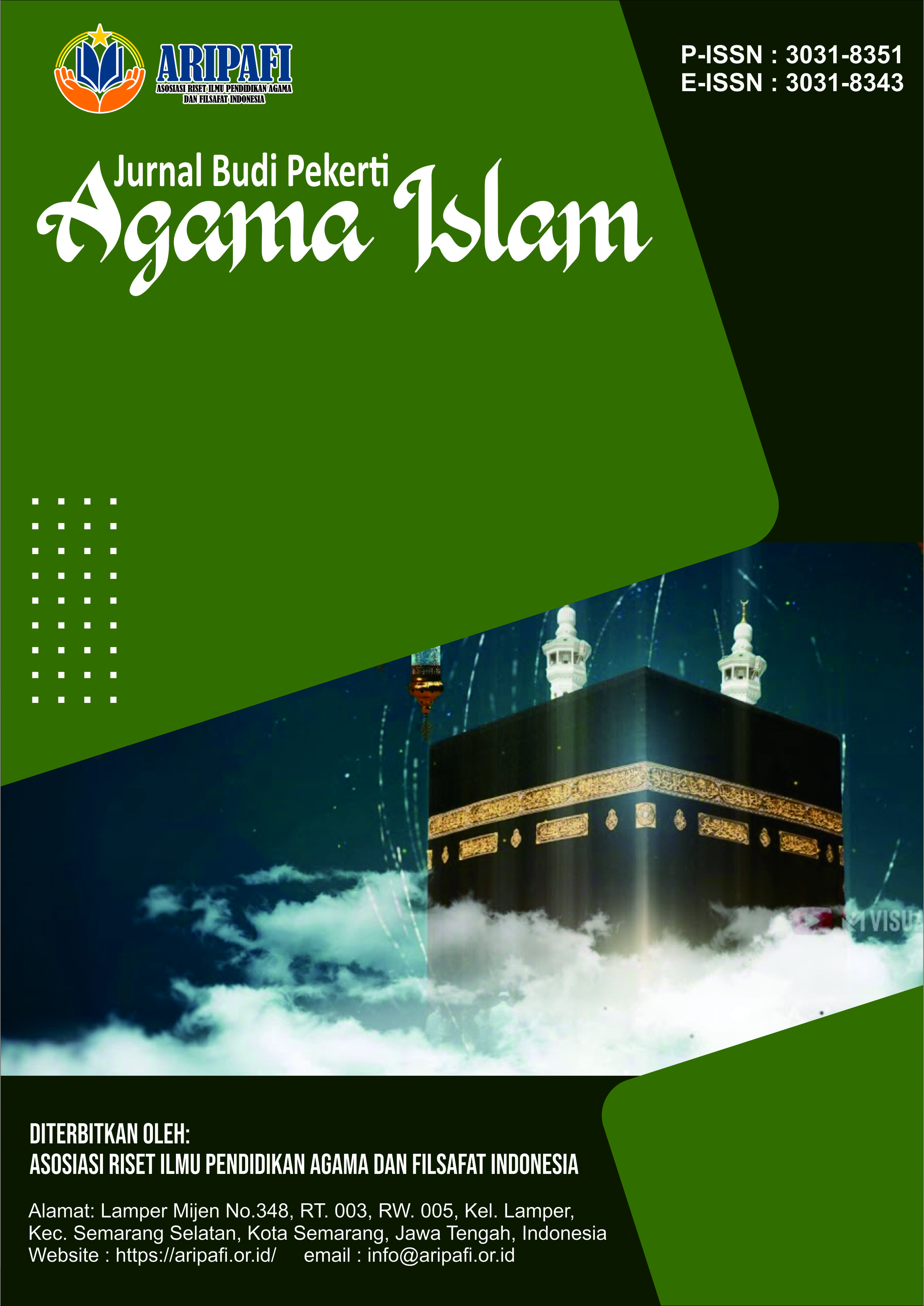Merekonstruksi Konsep I‘Tikāf melalui Tafsir Ilmiah: Menjembatani Spiritualitas dan Rasionalitas Al-Qur’an
DOI:
https://doi.org/10.61132/jbpai.v3i3.1291Keywords:
I‘tikāf, Qur’anic exegesis, tafsir ilmi, spiritualityAbstract
This study explores the reconstruction of the concept of I‘tikāf through the scientific interpretation (tafsir ilmi) of the Qur’an, aiming to bridge the gap between spirituality and rationality. The research employs a qualitative approach using library research methods to analyze Qur’anic verses related to I‘tikāf and various classical and contemporary tafsir works. The primary sources include the Qur’an and interpretations from scholars such as M. Quraish Shihab, al-Maraghi, and Ibn ‘Ashur. The study finds that I‘tikāf, when viewed through the lens of scientific exegesis, offers not only a spiritual retreat but also a space for reflection, intellectual development, and personal transformation. This integrated understanding enhances the relevance of Qur’anic teachings in the context of modern life, emphasizing that spirituality and reason are not mutually exclusive but complementary in the Islamic worldview.
Downloads
References
Abdullah, M. A. (2020). Islam sebagai ilmu: Epistemologi, metodologi, dan etika keilmuan Islam. Yogyakarta: Ircisod.
Adz-Dzahabi, H. (2000). Tafsir wa al-Mufassirun (Juz 2). Al-Qahirah: Maktabah Wahbah.
Aisyah, H., & Naan. (2020). Dzikir sebagai teknik meditasi sufistik dalam meningkatkan kualitas energi tubuh. Al-Amin: Jurnal Kajian Ilmu dan Budaya Islam, 3(2), 213–225.
Al-Kubaisi, A. A. (2004). I’tikaf (Cet. ke-6). Depok: Gema Insani.
Imarah, M. (1994). Al-‘Aql wa al-īmān fī al-turāth al-Islāmī. Kairo: Dār al-Shurūq.
Ma’luf al-Yassu’i, L., & Toffel al-Yassu’i, B. (2003). Al-Munjid al-Wasith fī al-‘Arabiyyah al-Mu‘āshirah. Beirut: Dar al-Masyriq.
Munawir, M. F. (2011). Reinterpretasi pemaknaan hadits tentang i’tikaf perempuan. Musawa: Jurnal Studi Gender dan Islam, 10(1), 33–70. https://doi.org/10.14421/musawa.2011.101.33-70
Nafisah, M. (2023). Tafsir ilmi: Sejarah, paradigma dan dinamika tafsir. Al-Fanar: Jurnal Ilmu Al-Qur'an dan Tafsir, 6(2), 63–80.
Romadhon, Y. A. (2019). Model pengukuran kekhusyuan shalat dengan pemeriksaan elektrofisiologi kuantitatif. Proceeding of The URECOL, 1–10.
Shihab, M. Q. (1999). Membumikan Al-Qur’an: Fungsi dan peran wahyu dalam kehidupan masyarakat. Bandung: Mizan.
Downloads
Published
How to Cite
Issue
Section
License
Copyright (c) 2025 Jurnal Budi Pekerti Agama Islam

This work is licensed under a Creative Commons Attribution-ShareAlike 4.0 International License.





